Ever noticed how your home feels dull and lifeless once winter rolls in? The air gets dry, the sunlight hides, and even your mood takes a drop.
But here’s the secret: bringing indoor plants that thrive in winter can completely change your mood.
They not only survive in cold temperatures, but they also help restore your home’s energy. In this guide, we’ll explore the best winter-friendly plants.
With these care strategies, creative display ideas, and seasonal maintenance tips, you can grow your plants even when temperatures drop.
Why Choose Indoor Plants in Winter?
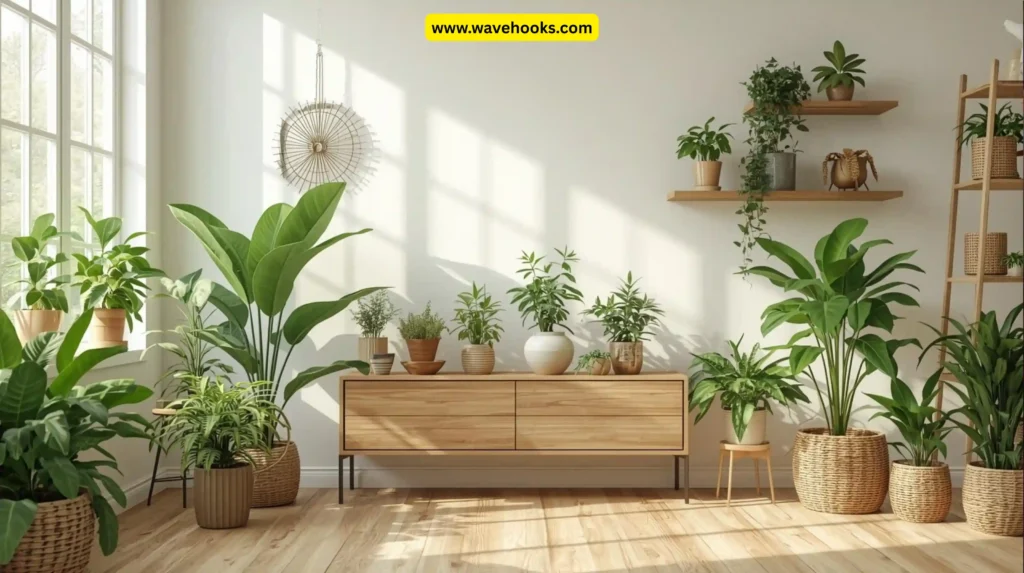
When outdoor gardens are inactive, indoor plants that thrive in winter take center stage.
Here are some powerful reasons to grow them during the chilly months:
1. Boost Mood Naturally – According to a 2024 environmental wellness study, having greenery indoors reduces winter blues by 37%. Plants release fresh oxygen and act as daily mood boosters.
2. Purify Stale Air – Homes are shut tight in winter, trapping pollutants. Indoor plants act as natural air filters, absorbing toxins and increasing humidity by up to 15%.
3. Add Color to Gray Days – When the world outside turns solid-colored, leafy greens and vibrant blooms bring warmth, depth, and personality back into your living space.
4. Improve Focus and Productivity – Research shows productivity increases by 15% when plants are in work areas perfect for cozy home offices during winter.
5. Create a Cozy Sanctuary – The presence of thriving plants transforms unproductive rooms into inviting shelters, helping you stay grounded through cold months.
Suggested Read: 30 Best Plants To Keep In A Bathroom Without A Window Care!
Best Low-Light Indoor Plants that Thrive in Winter
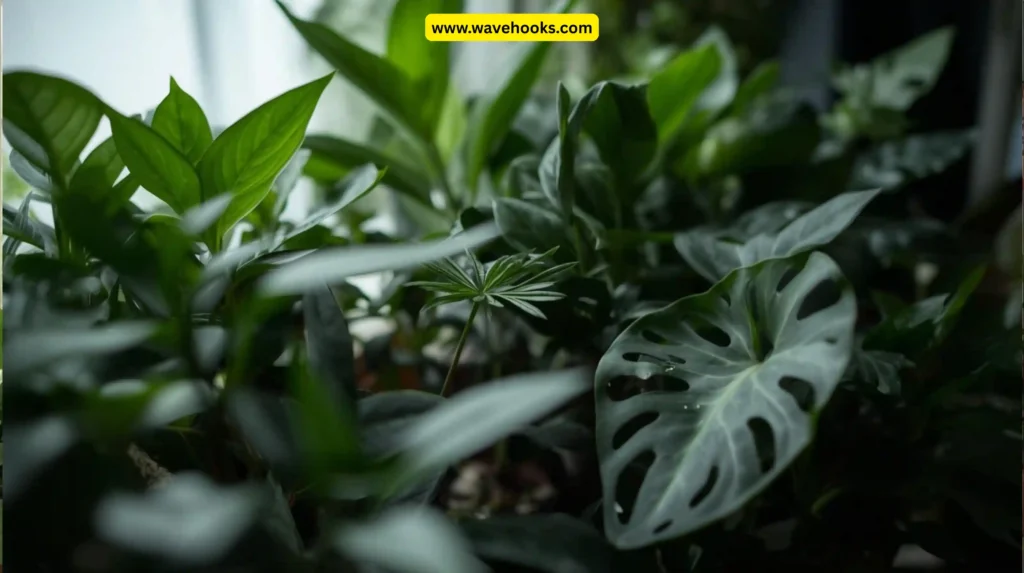
Here are some plants that can survive in winter:
1. ZZ Plant (Zamioculcas zamiifolia)
If you forget to water plants, the ZZ plant’s got your back. Its thick, waxy leaves not only survive in low light, but they shine in it. This plant keeps rooms looking fresh, even when sunlight disappears. Place it in a dark corner, and it’ll quietly thrive all winter long.
2. Pothos (Epipremnum aureum)
Meet the ultimate “set it and forget it” plant. Pothos loves dim rooms and even fluorescent light. It’s not just pretty. Studies say it removes up to 60% of indoor formaldehyde in a day. So while it looks beautiful from a shelf, it’s also quietly cleaning your air through the cold months.
3. Snake Plant (Sansevieria trifasciata)

This one’s the superhero of houseplants. The snake plant thrives anywhere dark corners, bright rooms. It releases oxygen at night, making it perfect for bedrooms. Low light? No problem. Forgot to water? Still fine. It’s the plant version of chill, ideal for busy winter days.
Suggested Read: 40+ Rare Types Of Snake Plants That Wow Instantly!
4. Cast Iron Plant (Aspidistra elatior)
Named for its toughness, the Cast Iron Plant can handle just about anything, like low light, dry air, or skipped waterings. Its deep green leaves stay lush even when temperatures drop. It’s the perfect no-drama friend that makes your winter home feel steady and alive.
5. Peace Lily (Spathiphyllum)
If you want beauty and calm, this plant delivers both. With glossy leaves and graceful white blooms, the peace lily brightens gray winter days. It also filters out mold and allergens naturally, keeping your air cleaner. Give it a shady spot, and it’ll reward you with elegant charm all season.
6. Chinese Evergreen (Aglaonema)
The Chinese Evergreen is like that stylish friend who never tries too hard. Its patterned leaves stay gorgeous under low light and moderate humidity. Whether on a side table or your work desk, it brings a soft, tropical feel to any cozy winter space without needing much attention.
Suggested Read: Does Chinese Money Plant Bring Good Luck | 10 Proven Facts!
Top Air-Purifying Indoor Plants that thrive in winter to Keep Your Home Healthy

Here are some top air-purifying indoor plants that thrive in winter:
7. Spider Plant (Chlorophytum comosum)
This cheerful plant is a true multitasker. NASA found it removes nearly 90% of toxins like carbon monoxide and formaldehyde within 48 hours. Those arching green-and-white leaves look amazing in hanging baskets. It’s a low-maintenance air freshener that loves winter kitchens and living rooms.
8. Boston Fern (Nephrolepis exaltata)
Boston ferns are like nature’s humidifiers. Their lush fronds add softness to your space while boosting moisture in dry winter air. They also help remove formaldehyde from enclosed rooms. Keep the soil slightly damp, and this elegant green beauty will return the favor with fresh, healthy air.
9. Areca Palm (Dypsis lutescens)

Dreaming of tropical warmth in winter? The Areca Palm brings it home. Its feathery fronds release moisture, easing dry skin and sinuses during heating season. Beyond looks, it’s an excellent air purifier that makes any cold space feel instantly breezier and more comfortable.
10. Rubber Plant (Ficus elastica)
The Rubber Plant’s thick, glossy leaves aren’t just striking, but they’re hardworking, too. They absorb indoor toxins and thrive in gentle, indirect light. Even in winter, this plant stands tall and lush, adding a bold touch of green while quietly purifying your indoor air.
Suggested Read: 20 Easy Plants For Apartment Balcony You’ll Actually Love!
11. Dracaena (Dracaena marginata)
Want something sculptural and low-maintenance? Dracaena is perfect. Its long, narrow leaves create a modern vibe while filtering out benzene and carbon monoxide. It’s slow-growing and forgiving, making it an ideal companion for cozy winter months when sunlight is limited.
12. Aloe Vera (Aloe barbadensis)
Aloe Vera is both beautiful and practical. Its fleshy leaves store healing gel for burns and dry skin, while also cleaning the air. It loves bright, indirect light and little water, just what winter homes need. This plant brings health, calm, and a touch of sunshine indoors.
Easy-to-Care-For Indoor Plants that thrive in winter for Beginners
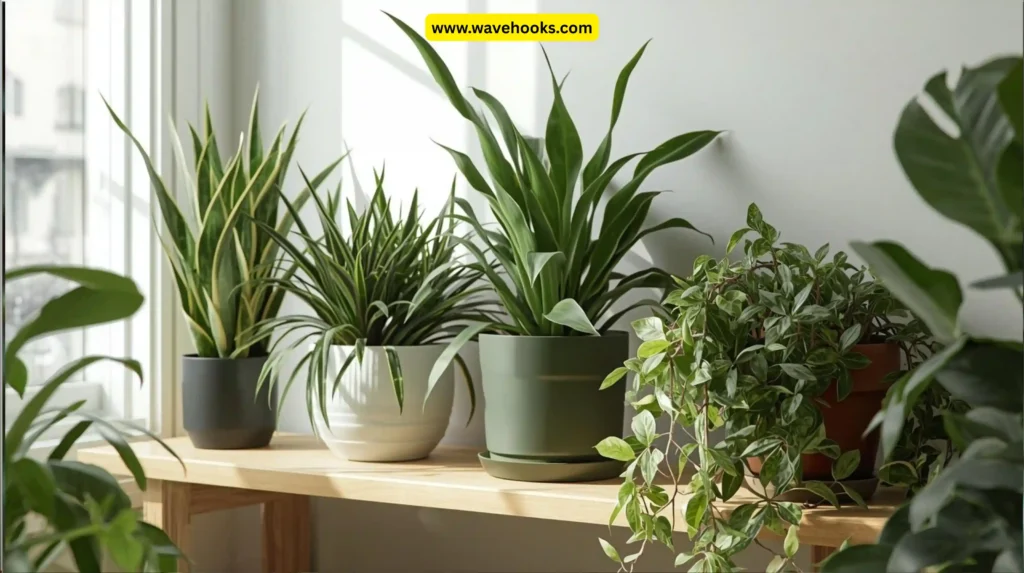
Here are some easy-to-care-for indoor plants that thrive in winter:
13. Philodendron Heartleaf
This lovely vine is pure heart. Its heart-shaped leaves trail gracefully, thriving even in low light. Missed watering? It forgives you. It’s perfect for shelves, hanging pots, or anywhere you want easy greenery that grows happily through the dullest winter days.
14. Lucky Bamboo (Dracaena sanderiana)
Low effort, high charm, that’s Lucky Bamboo. It grows beautifully in just water or soil and brings a sense of calm energy to your space. Its graceful stalks stay fresh even in dim corners, making it a great winter mood booster with a touch of good luck.
15. Jade Plant (Crassula ovata)

This little succulent is all about endurance. Its thick leaves store water, meaning you can forget about watering for weeks. It prefers a bit of sunlight but stays cheerful even indoors. Over time, it grows like a tiny tree, symbolizing prosperity through the winter season.
Suggested Read: Do You Need Nutrients After Repotting A Indoor Plants? 10 Facts!
16. Pilea Peperomioides (Chinese Money Plant)
Small, round, and irresistibly cute, the Chinese Money Plant is perfect for small spaces. It thrives in indirect light and spreads new baby plants easily. In the middle of winter, it adds a cheerful pop of green that feels alive and hopeful.
17. Parlor Palm (Chamaedorea elegans)
This elegant palm has been a favorite since Victorian times, and it’s easy to see why. It loves shade and doesn’t need frequent watering. Its feathery fronds add instant grace and make any corner feel more relaxed and inviting through the cold months.
18. Peperomia (Peperomia obtusifolia)
Peperomia is a small plant with a big personality. Its thick, glossy leaves keep their shine even in dim rooms. It doesn’t mind a little neglect and looks charming on desks or windowsills. Think of it as a tiny winter companion that never complains.
Plants That Add Color and Warmth to Your Winter Space

Here are some plants that add color to your winter space:
19. Anthurium
When winter feels dull, Anthurium brings the heat. Its glossy red flowers bloom for months, adding instant color and warmth. It loves moderate light and a touch of humidity. Just one pot can make your space feel tropical and alive, even when it’s freezing outside.
20. African Violet (Saintpaulia)
These delicate purple flowers are winter’s sweetest surprise. African Violets thrive in indirect light and mild warmth, brightening any windowsill. With proper care, they bloom again and again, turning gray days into cozy, colorful moments.
21. Bromeliad

Exotic and cheerful, Bromeliads bring a burst of brightness to cold days. Their colorful centers last for months and love indoor humidity. Place one in your living room, and suddenly it feels like summer again without cranking up the heat.
22. Kalanchoe
This vibrant succulent bursts into clusters of red, orange, or yellow flowers during the darkest months. It’s super low-maintenance, just water sparingly and give it light. Kalanchoe adds cheer and color when your home needs it most.
23. Amaryllis
Amaryllis is pure drama in the best way. Its tall stalks and bold, trumpet-shaped flowers are the stars of any winter room. With a little bulb care, it’ll reward you with blooms year after year, just in time for the holidays.
24. Cyclamen
Cyclamen is winter’s gentle beauty. Its pink blooms and heart-shaped leaves bring softness to chilly spaces. It loves cool temperatures and bright, indirect light. With minimal care, it adds elegance and color just when you crave warmth the most.
Seasonal Plant Care: Keep Your Indoor Jungle Thriving All Year

Caring for plants isn’t just watering and waiting. It’s about tuning in, noticing when they stretch, droop, or perk up. Let’s break it down season by season.
1. Spring – Wake Up Your Plants
Spring is like your plants rubbing their eyes and stretching after a long nap. Everything feels fresh, and it’s the perfect time to hit refresh.
1. Repot and Trim Roots: Roots get cozy in their pots over winter, but cramped roots mean stressed plants. Gently tease them out, trim what looks tired, and give them fresh soil. It’s like giving your plant a bigger apartment with room to grow. They’ll thank you with new shoots.
2. Gradually Increase Sunlight: Sunlight is exciting after months of gloom, but don’t push your plant into full sun all at once. Move it closer to the window slowly. Watch it stretch happily toward the light, trust me, it’s satisfying.
3. Start Light Fertilization: A little food goes a long way now. Think of it like a tiny energy boost after a long winter. Your plant perks up, leaves get shinier, and new growth appears faster than you expect.
Suggested Read: Indoor Evergreen House Plants: 30 Stunning Picks You’ll Love!
2. Summer – Let Them Glow
Your plants are soaking up sunlight like little sunbathers. But too much love or sun can be stressful.
1. Water More Often (But Wisely): Warm days dry the soil fast. Water when the top inch feels dry and let it drain well. Think of it like giving them a proper drink, not drowning them in a pool.
2. Rotate Plants Weekly: They naturally lean toward the light, so spin them around a bit each week. Your plants grow straight and balanced, and you avoid those clumsy, lopsided stems. It’s a small move, big impact.
3. Protect from Harsh Rays: That noon sun can scorch delicate leaves. Sheer curtains or blinds are like sunglasses for your plants, keeping them comfortable while still letting them soak in energy.
Suggested Read: 10 Summer Cleaning Tips That Makes Your Home Shine Well!
3. Autumn – Slow Down and Preparation
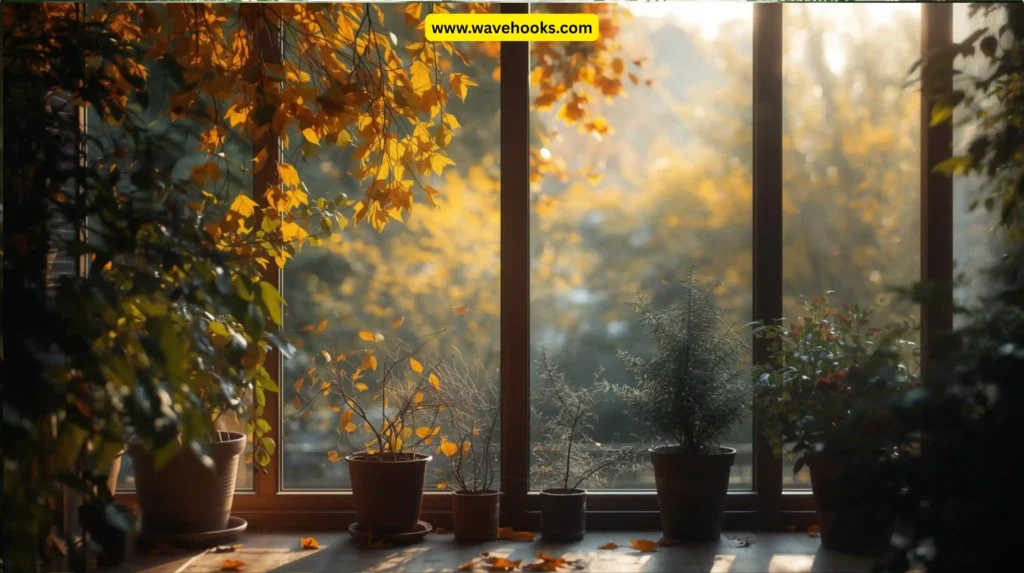
Autumn is gentle. Leaves fall outside, and inside, your plants start taking it easy. It’s time to match their pace.
1. Reduce Feeding: Stop fertilizing as the days shorten. Your plants are winding down, not growing faster. Overfeeding now is like trying to make someone run a marathon when they just want a nap.
2. Move Delicate Plants Indoors: Before frost hits, bring tropical or sensitive plants inside. Don’t just plop them by a window. Give them a few days to adjust. A gradual transition keeps them happy and avoids shock.
3. Clean and Inspect Leaves: Dust and pests love to sneak in before winter. Wipe leaves gently and peek under them. Catching trouble early means healthier plants and fewer headaches later.\
Suggested Read: I Tried the Ultimate Fall Cleaning Checklist | Here’s What Happened
4. Winter – Rest, Recharge, and Cozy Up
Winter isn’t a dead time, but it’s chill time for your plants. Think of it as their hibernation season.
1. Limit Watering and Feeding: Less light means slower growth. Overwatering is a common winter mistake. Check the soil before pouring water, and skip fertilizer. Your plants are resting, not partying.
2. Maintain Stable Warmth: Keep your home comfortable (around 60–70°F) and away from drafts or direct heater blasts. Plants hate sudden temperature swings, just like you hate stepping outside in freezing wind without a jacket.
3. Group Plants for Humidity: Dry winter air sucks the life out of leaves. Group them or pop a humidifier nearby. It’s like giving them a cozy community where they’ll thrive and even look happier just being near each other.
Suggested Read: 15 Unique Winter Decorating Ideas For Fireplace Mantels!
Creative Ways to Display Indoor Plants in Your Home
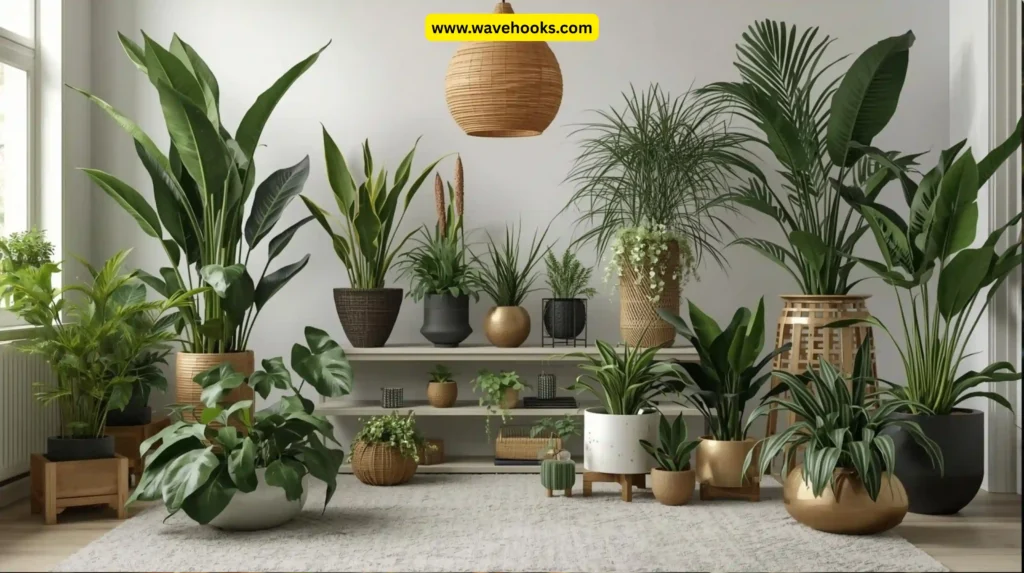
Styling plants isn’t just decor, but it’s storytelling. Here’s how to show off your green companions beautifully.
The way you display indoor plants that thrive in winter can make your home feel vibrant, personalized, and alive.
1. Hanging Macrame Planters: Hang your plants like living chandeliers! Macrame holders add bohemian flair and save space. Perfect for trailing greens like pothos or philodendron that love to drape and dance in the air.
2. Floating Wall Shelves: Turn your walls into living art. Mount floating shelves and arrange small plants at different heights. It’s modern, stylish, and keeps greenery at eye level.
3. Tiered Plant Stands: When space is tight, go vertical. Tiered stands let you display multiple plants without clutter. Mix heights, colors, and leaf shapes for that magazine-worthy corner everyone envies.
4. Glass Terrariums: For minimalists, terrariums are pure elegance. They hold succulents, moss, or tiny ferns, creating self-contained little worlds. Add fairy lights for a magical glow during cozy winter evenings.
5. Window Sill Gardens: Sunlight is scarce in winter, so make the most of it! Line your windowsills with smaller indoor plants that thrive in winter, like aloe, jade, or African violets. They’ll soak up every bit of daylight and give you cheerful company while you sip your morning coffee.
Suggested Read: 15 Best Indoor Plants For Asthma And Allergies: Try Now!
How to Properly Water Indoor Plants in Winter
Watering feels simple, right? But in winter, it’s where most plant parents go wrong.
Overwatering is the silent killer of indoor plants that thrive in winter. Here are some tips for watering your plant:
- Always check soil dryness before watering about one inch deep.
- Use room-temperature water because cold water shocks the roots.
- Water early in the day to allow evaporation.
- Reduce watering frequency by 25–40% compared to summer months.
- Remember, roots need air as much as moisture.
Suggested Read: 15 Indoor Plants That Keep Roaches Away: The Ultimate Fix!
Tips for Maintaining Humidity for Your Indoor Garden
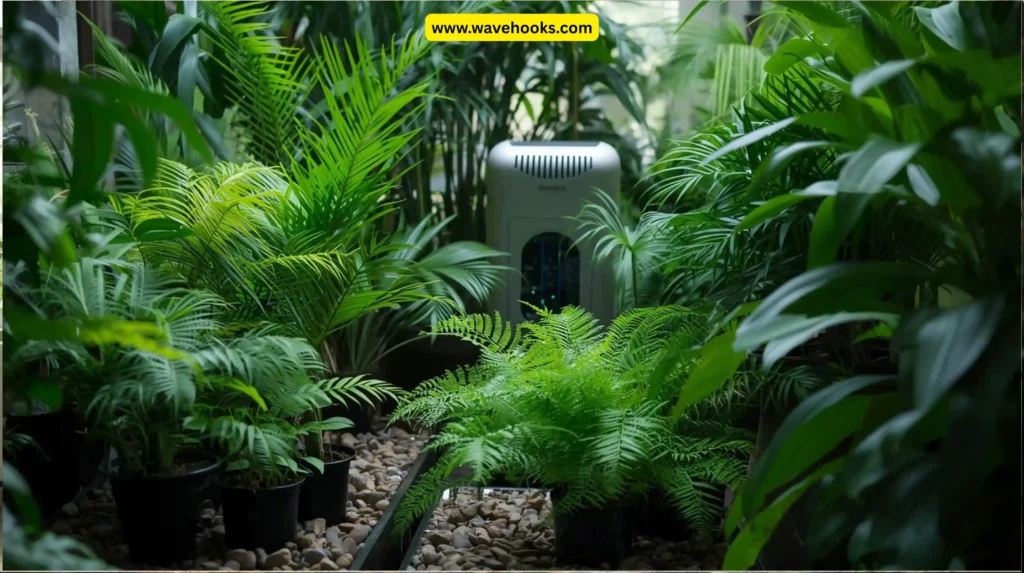
Here are some simple and easy tips for maintaining humidity for your indoor garden:
- Group Plants Together: Their collective transpiration raises local humidity.
- Use Pebble Trays: Place pots above water-filled trays so that moisture evaporates upward.
- Run Humidifiers: The Ideal humidity range is 40–60% for indoor plants that thrive in winter.
- Mist occasionally: Especially for tropical plants like ferns and palms.
- Avoid Drafts: Keep plants away from heaters or cold windows.
Suggested Read: Do House Plants Attract Bugs? The Surprising Truth Revealed!
Common Challenges for Indoor Plants in Winter and How to Overcome Them
Winter doesn’t just challenge humans, but your plants feel it too. Less light, dry air, and unpredictable temperatures can make even the toughest greens struggle.
But with a few mindful tweaks, you can keep your indoor plants that thrive in winter looking happy and healthy till spring.
- Low Light struggles: Rotate plants weekly, supplement with LED grow lights.
- Dry indoor Air: Increase humidity using trays or humidifiers.
- Overwatering: Stick to a strict schedule. Less is more.
- Pest Issues: Inspect weekly by wiping leaves with neem oil solution.
- Temperature Swings: Keep plants away from vents or window drafts.
A little consistency goes a long way toward keeping your indoor plants that thrive in winter healthy all season long.
Suggested Read: How To Get Rid Of Gnats In Plants: 15 Must-Try Hacks!
conclusion
Think of your plants as little leafy friends. They notice everything, even the tiny things.
Pay attention, adjust with the seasons, and give them a little extra love in spring, some shade in summer, a gentle move indoors in autumn, and a cozy rest in winter.
Every new leaf, every tiny sprout, every shiny stem is basically your plant saying, “thanks for caring!”
So go ahead, move that pot, wipe off those dusty leaves, and watch your indoor jungle really come alive. Trust me, it’s way more satisfying than you think.
Suggested Read: 16 Top Effective Mosquito Repellent Plants Safe For Dogs!
FAQ’s: Indoor plants that thrive in winter
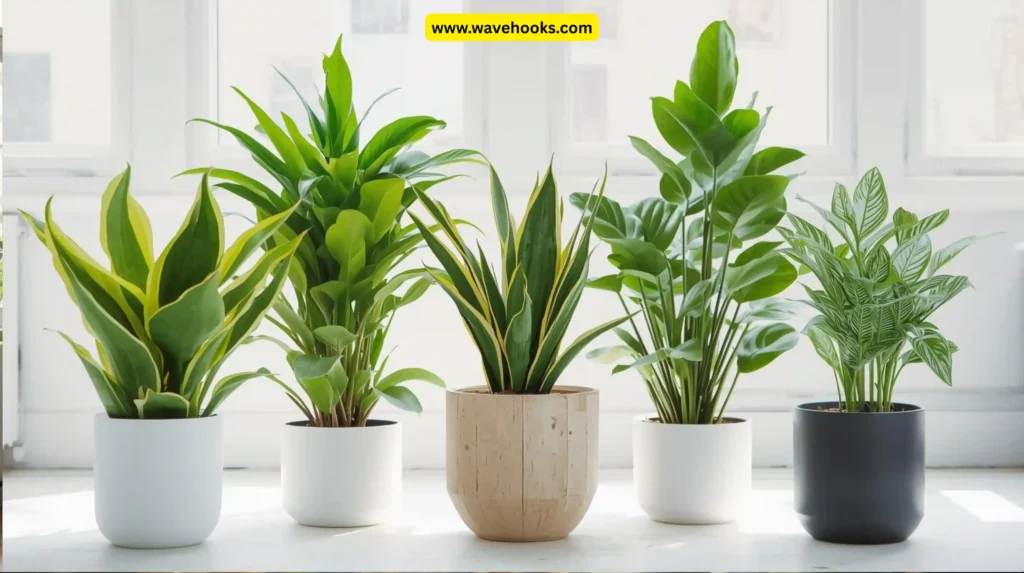
1. Which indoor plant grows fastest in winter?
If you’re looking for growth even when days are short, pothos and philodendron are best. They’re tough, adapt quickly to lower light, and forgive the occasional missed watering. Their trailing vines or heart-shaped leaves make any room instantly greener and more lively, even in the coldest months.
2. Which plants clean the air best in cold months?
Want plants that do more than look pretty? Spider plants, snake plants, and peace lilies are proven air purifiers. They remove indoor toxins and improve air quality, even when your windows are shut tight. A few strategically placed pots can make your home feel fresher and more vibrant during the cozy, closed-off winter months.
3. What are the easiest winter houseplants for beginners?
If you want something low-maintenance but still lively, try ZZ plant, jade plant, lucky bamboo, or peperomia. These plants tolerate neglect, low light, and cooler temperatures. They’re basically relaxing, low-effort, but still beautiful. Perfect for anyone new to indoor gardening.
4. Can indoor plants survive near heaters?
Heaters dry out soil and leaves, and intense heat can cause leaf burn or stress. Keep plants at least 3 feet away from radiators or vents. If the room is very dry, group them or add a tray of water nearby. It helps keep the humidity up and your plants comfy.
Suggested Read: How To Know If A Plant Is Thirsty In Under 5 Minutes!








One Comment